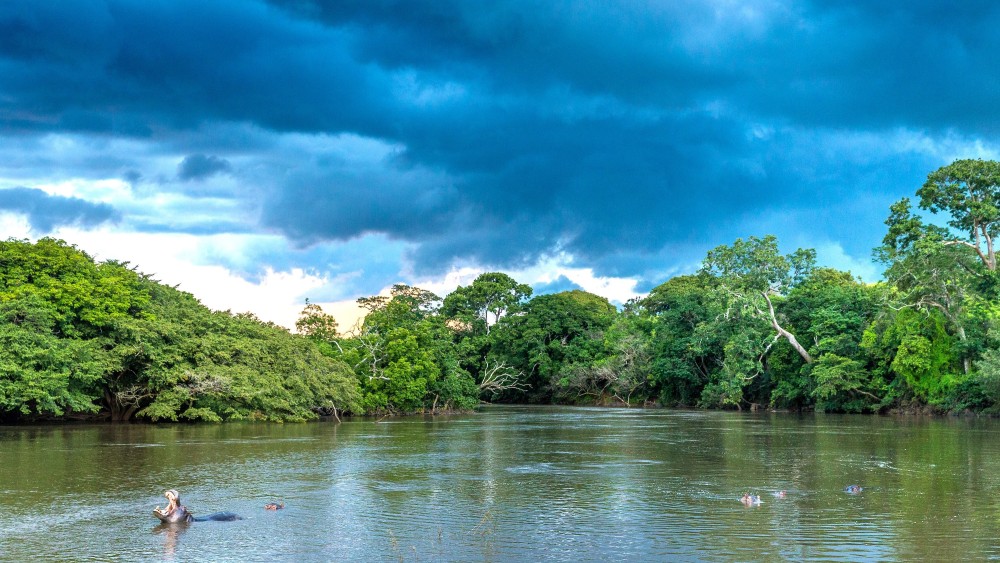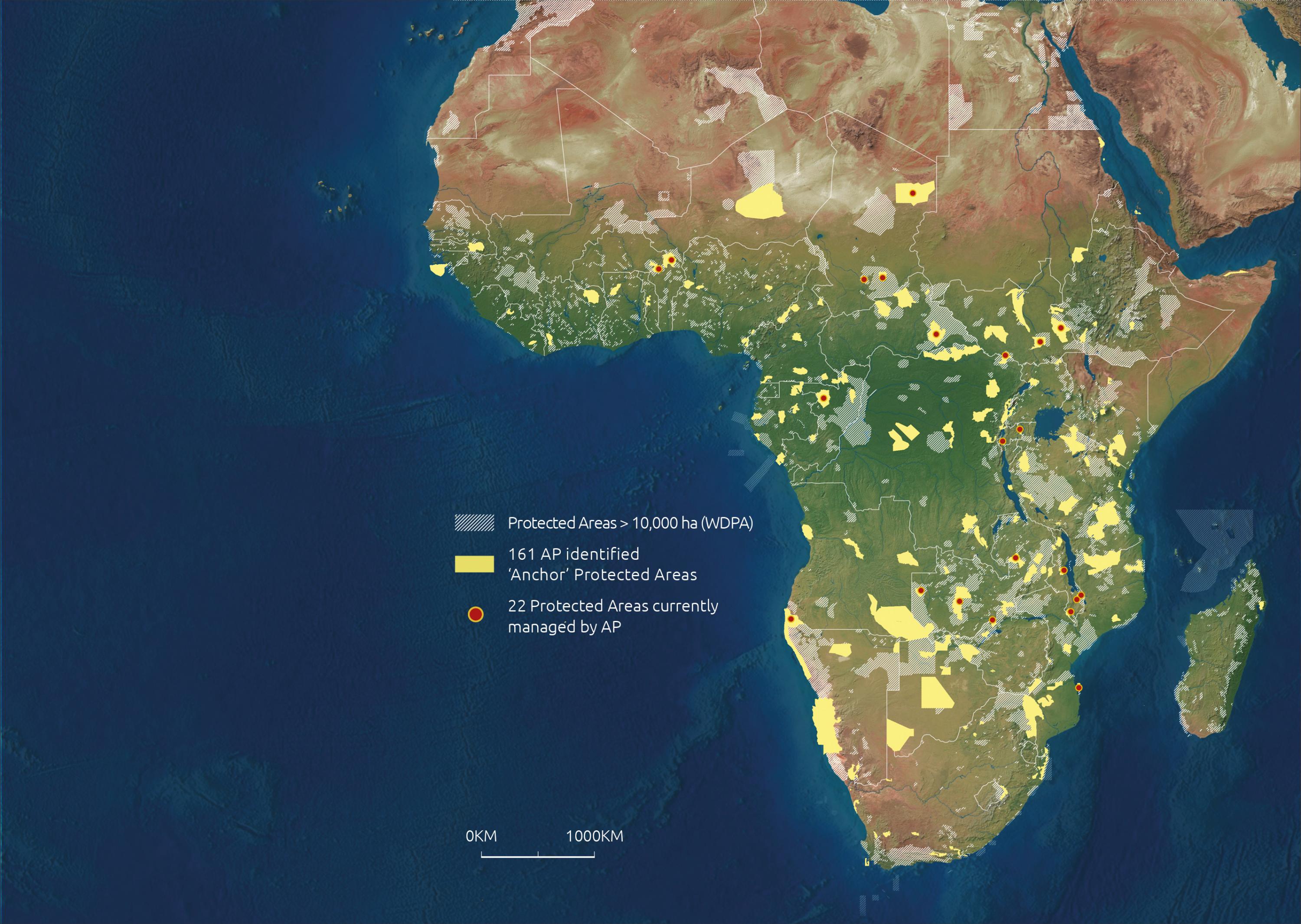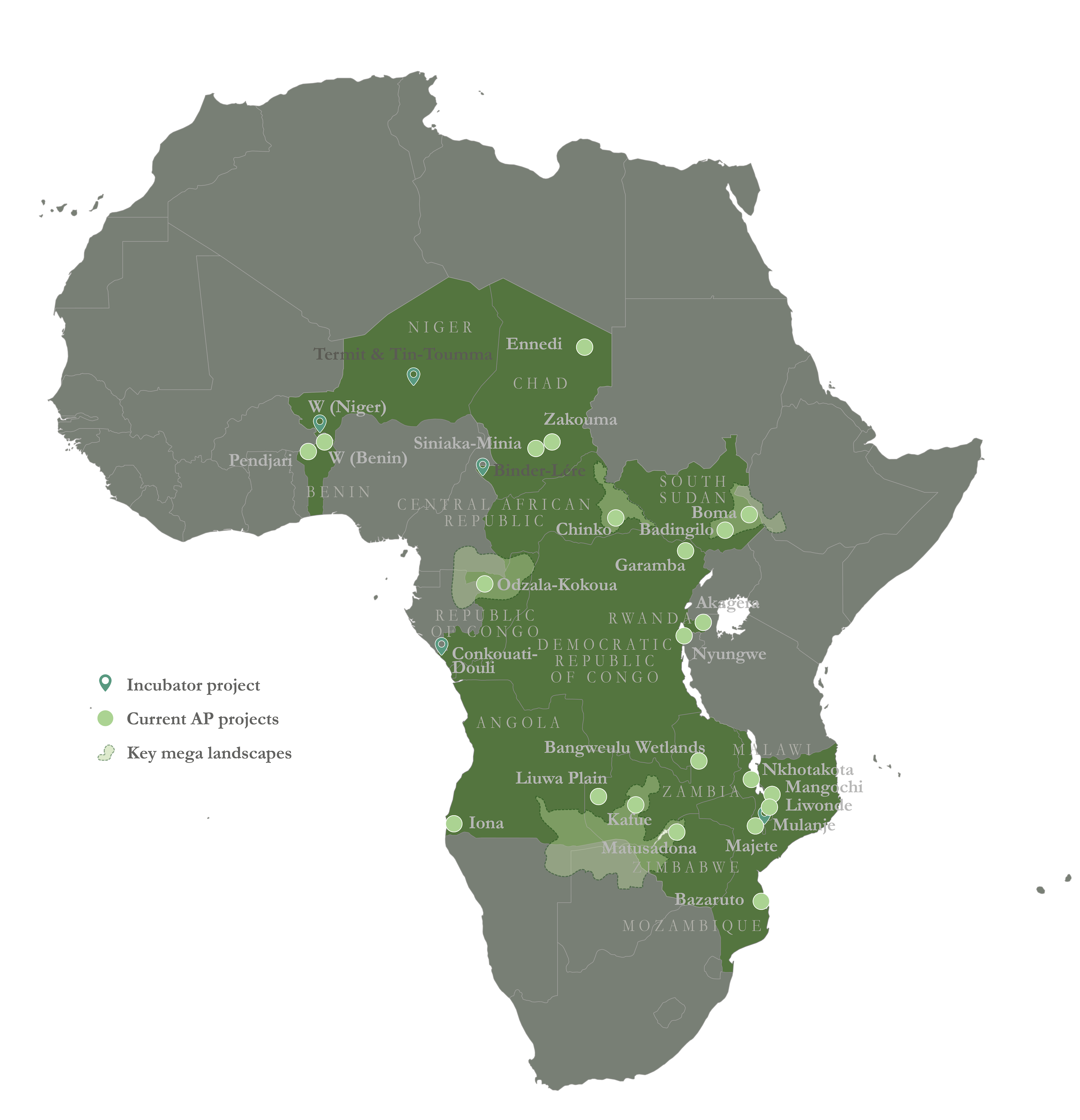African Parks’ 161 Strategy: Securing the Foundation of Africa’s Protected Area Network
What is not being managed today, will be lost tomorrow
– Peter Fearnhead, CEO of African Parks
If we are to safeguard the natural systems that sustain all life on Earth, we need a strategy to guide biodiversity conservation. In 2019, the Global Deal for Nature highlighted the need for at least 30% of terrestrial and marine areas to be protected if we are to conserve the planet’s biodiversity, secure essential ecosystem services and prevent the catastrophic consequences of a changing climate. This is a remarkable vision, and the strategies towards achieving this will vary across the world. In Africa a pragmatic roadmap to achieve this vision is needed.
The World Database of Protected Areas (WDPA) identifies over 8,000 formally registered protected areas in Africa. Yet, most of these areas are too small to provide ecosystem services at scale for long-term resilience. Of these, only 1,050 are larger than 50,000 hectares. In addition, as a result of decades of poor management and a lack of adequate resources, many of these areas are merely “paper parks”, with so much of the habitat and biodiversity lost, that they are nearly impossible to restore without extraordinary political support and financial resources being secured.
An Analysis of Africa’s Protected Areas
 © Marcus Westberg
© Marcus WestbergDuring 2020, African Parks conducted an internal analysis of the protected area network in Africa, utilising data layers and our collective expertise of the various regions in Africa. Considering a number of key elements including landscape size and potential, strength of legislation and ecosystem health and threats, we identified 161 “anchor areas”. These are areas which have the greatest chance of being large functioning landscapes that harbour globally significant biodiversity to provide invaluable ecosystem services such as carbon sequestration, clean air and fresh water, while contributing to stability, food security and socio-economic benefits for millions of people.
For the purpose of the analysis, we focused on areas of large scale that are still relatively ecologically intact. This does not imply that smaller areas do not play a valuable role – they are important for the conservation of individual species, as well as for cultural and tourism reasons. However, to conserve biodiversity and unlock the full suite of ecosystem services over the long-term, an element of scale is required. Services such as carbon sequestration, water provisioning and resource harvesting require significantly larger areas to have an impact at a national or global level, and to be sustainable. Larger areas offer enough space for all species to be present, enabling full ecological and evolutionary processes to unfold, without intensive human interventions. Larger size also ensures resilience to threats such as climate change, and typically have greater genetic diversity as well as adequate habitat and natural resources to sustain populations during times of adverse conditions.
161 “Anchor Areas”
We noted that if the 161 identified “anchor areas”, which amount to 130 million hectares, are well managed, they will form a backbone for the continent’s conservation strategy, providing expandability into adjacent legislated areas and landscapes.
Of the 161 protected areas, we estimated that only 69 have a management solution that - if maintained - would ensure these areas survive into the future. The remaining 92 are currently experiencing significant threats such as uncontrolled poaching, habitat encroachment and degradation. With little to no resources for management and protection, these areas are unlikely to survive at the current rate of resource depletion.
We need to act now, if we are to prevent these areas from being lost forever.
While these areas only represent a small percentage of the total number of protected areas, they constitute nearly a quarter of the protected surface area in Africa. These 161 areas also represent over 85% of Africa’s ecoregions and the unique biodiversity that these harbour. We believe that if these areas can be secured and well managed, it will provide a solid foundation for broader conservation in these landscapes. This is our roadmap for the next decade. We aim to directly manage 30 protected areas by 2030, covering over 30 million hectares, focusing primarily on areas which form part of the 161 “anchor areas”.
Mentorship and Support
We believe that our tried-and-tested model, experience and ability to scale, offer the best chance of making a significant impact on this number of protected areas, but we cannot do this alone. For this reason, we are nurturing an “Incubator Programme” through which we work with other management organisations, NGOs, and operators to mentor and provide technical support that can be refined to replicate our model of delegated management. In this way, we aim to help secure 10 more protected areas, spanning an additional five million hectares.
These ambitious objectives will contribute significantly to the global target of protecting 30% of the Earth to keep the planet flourishing.
But we can’t do this alone. To protect biodiversity at scale, it’s imperative that we form sound collaborations with other organisations committed to the same outcomes. With these strong partnerships, together with governments and communities, all vested in solutions and accountability, we can make a real difference in securing and safeguarding Africa’s protected areas for the benefit of people and wildlife long into the future.
Your Support Goes a Long Way
At African Parks we are working everyday to protect Africa's last wild landscapes. By donating to us, you are making a difference and are giving hope to people and wildlife across the continent.
Donate
